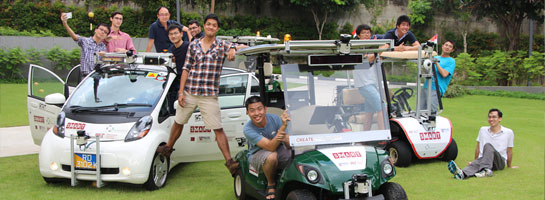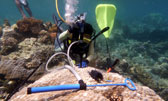





%20%26%20dispersed%20non-stimulated%20cancer%20aggregates.jpg) Images of stimulated (left) & dispersed non-stimulated cancer aggregates
Images of stimulated (left) & dispersed non-stimulated cancer aggregates
Singapore – Cancer is prevalent in Singapore, with 37 people being diagnosed daily, according to the Singapore Cancer Society. The three known tools to fight cancer are: Surgery, radiation and chemotherapy. A novel treatment, known as Tumour Treating Fields (TTFields), is gaining traction and is FDA-approved for Glioblastoma, a type of brain cancer. Pre-clinical trials are gathering pace for breast, cervical and colorectal cancers, amongst others.
Having worked on microfluidic devices (integrated, portable devices that provides a 3D microenvironment for cells, allowing laboratory tests to be done swiftly) since 2012, research scientists at the Singapore-MIT Alliance for Research and Technology (SMART) [新加坡-麻省理工学院科研中心] have engineered a novel 3D microfluidic culture platform for TTFields application.
This unique microfluidic device (2.5cm x 2.5cm), embedded with electrodes and made from PDMS (Polydimethylsiloxane), renders the application of an alternating electric field to cancer cells in a 3D environment more physiologically relevant than in standard 2D cell culture. The research showed that the metastatic prowess of cancer cells and cancer cell aggregates (akin to tumour mass) were reduced after electric field treatment. In fact, the proliferation rate of the treated cancer cell aggregates was 35% lower than the one of the untreated cells. And non-cancer cells, like the endothelial cells (cells lining the blood vessels, closest to the cancer cells), were not significantly affected.
This groundbreaking research ‘Engineering a 3D microfluidic culture platform for tumor-treating field application’ was published in Nature Scientific Reports on
24 May 2016 and validates that the system can be used to rapidly screen the effect of TTFields on cancer and non-cancer cells alike, within an in vivo-like microenvironment with the potential to optimise treatment protocols and evaluate synergies between TTFields therapy and chemotherapy.
See PDF News Release for more.
This story was also featured in Straits Times, Science Daily, Asian Scientist, BioTechinAsia and AsiaResearch News.